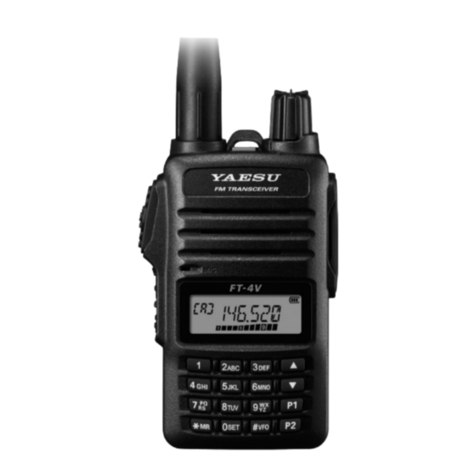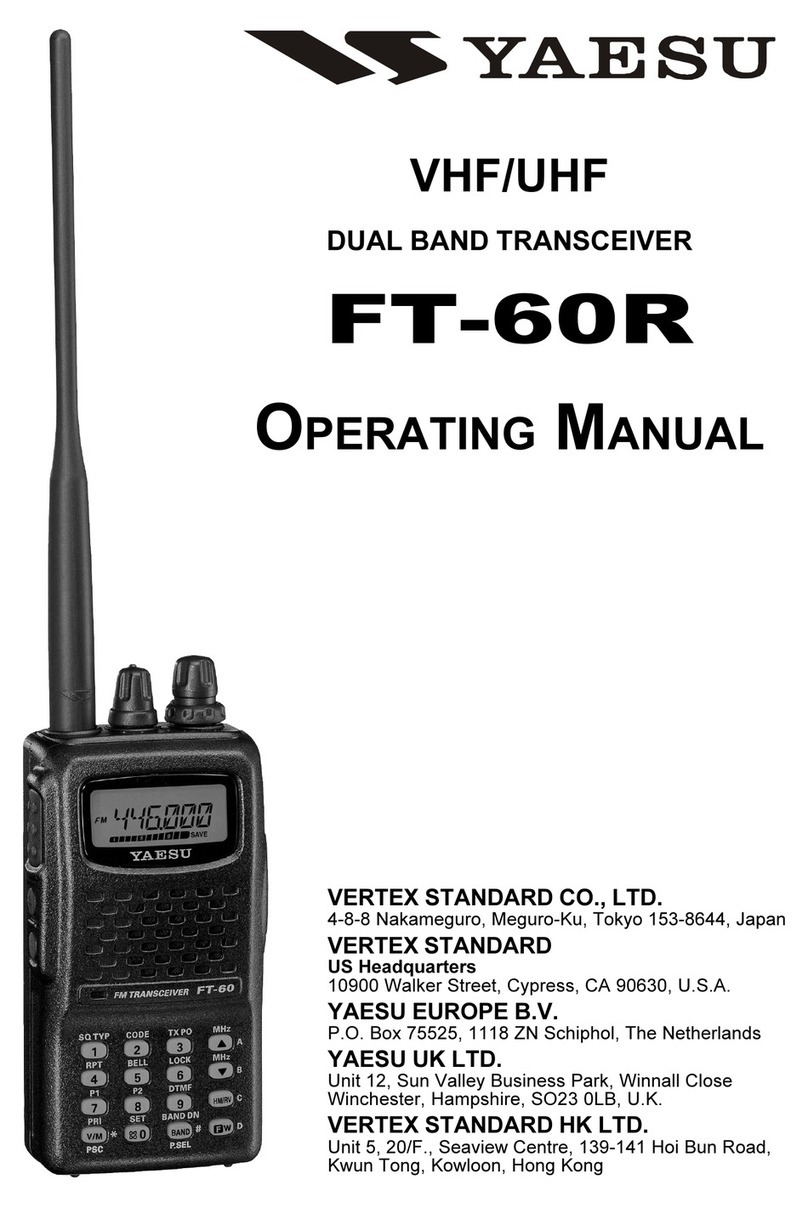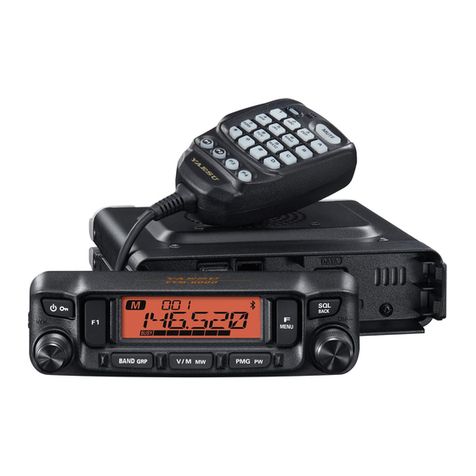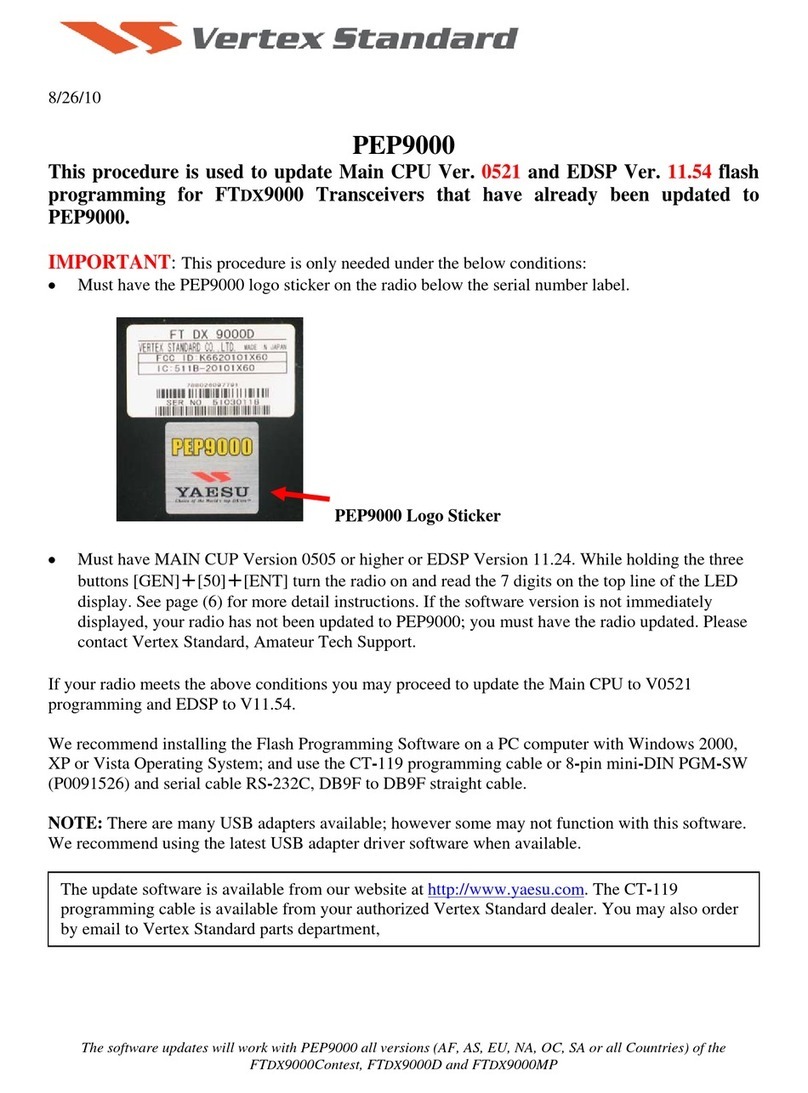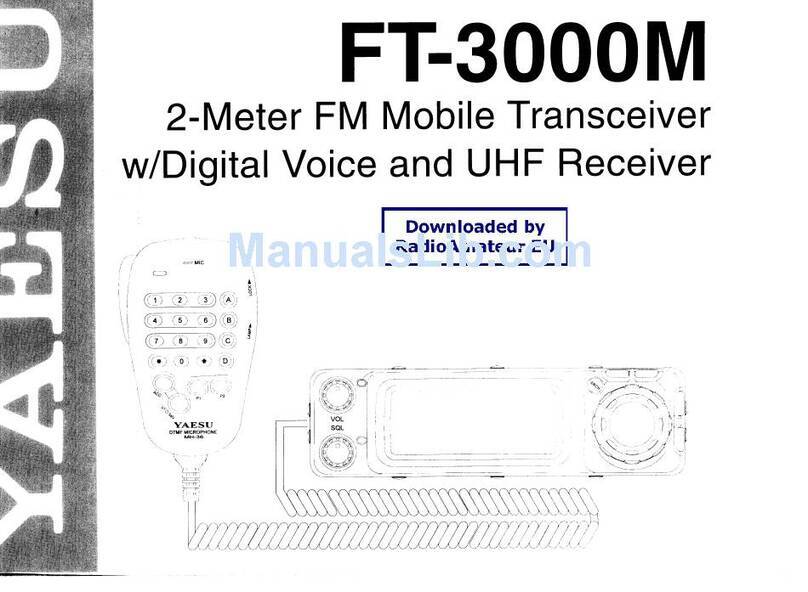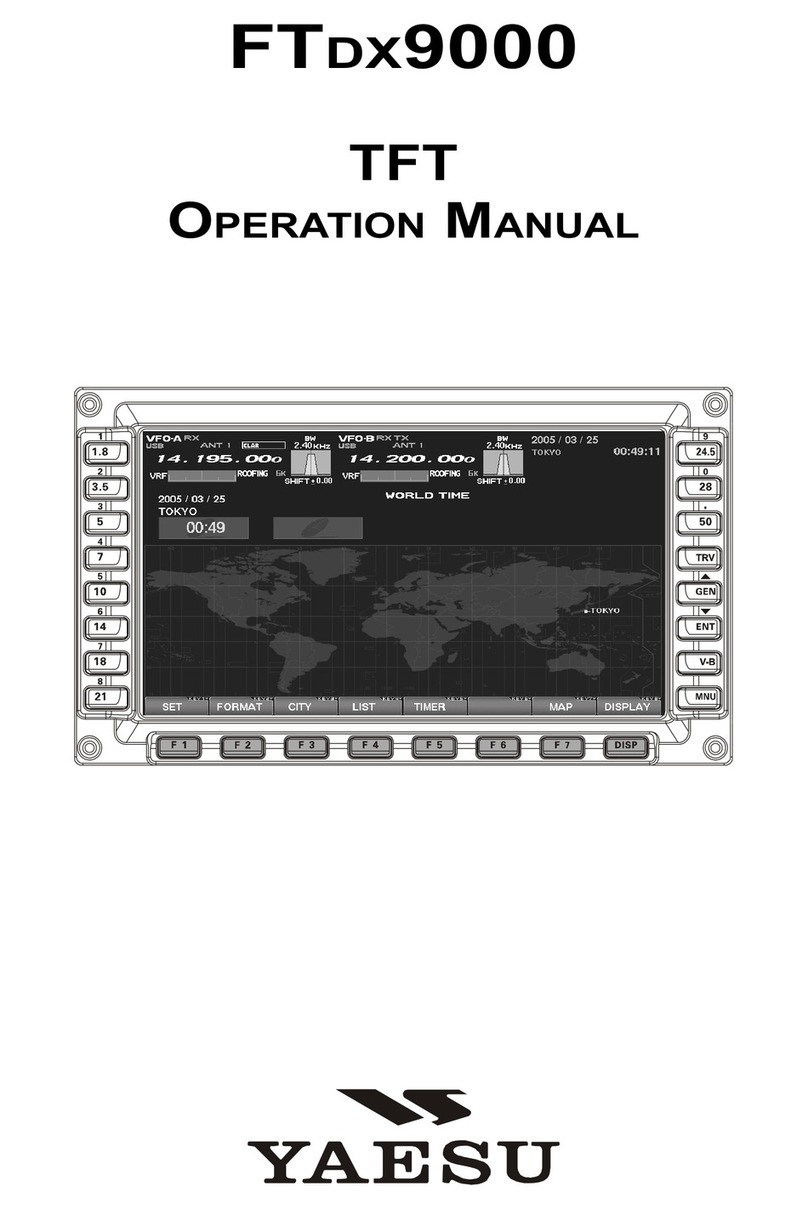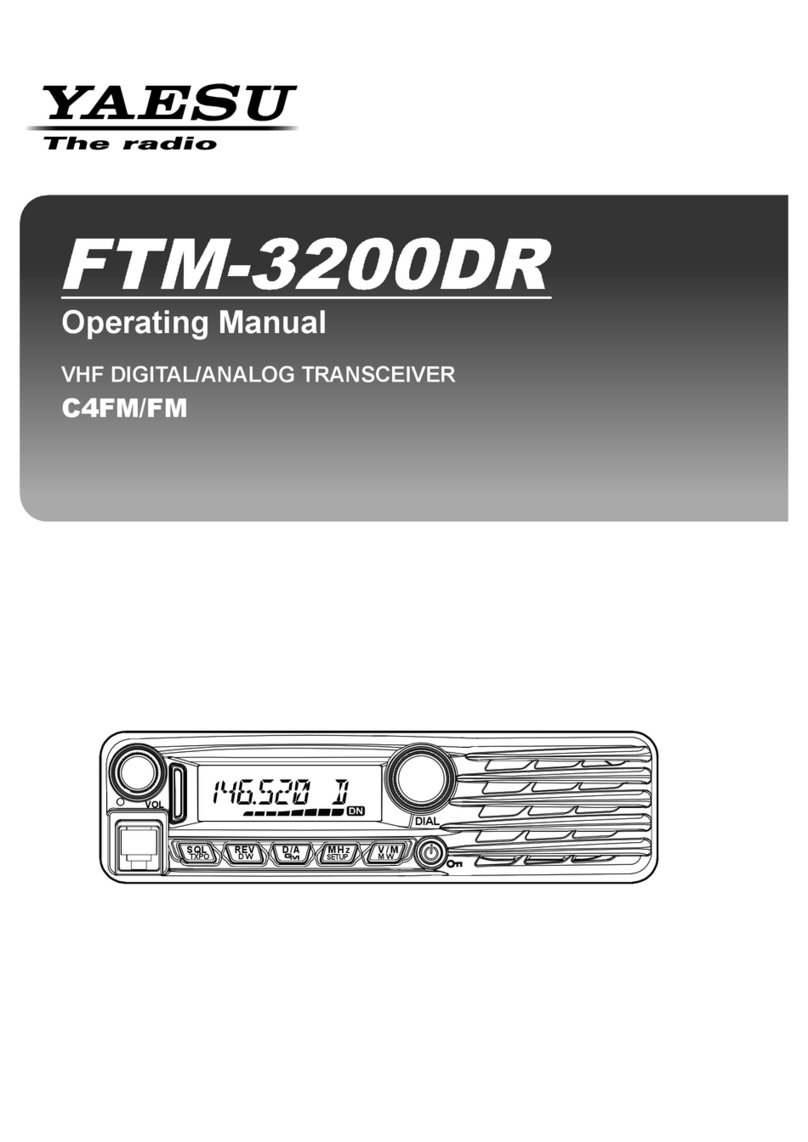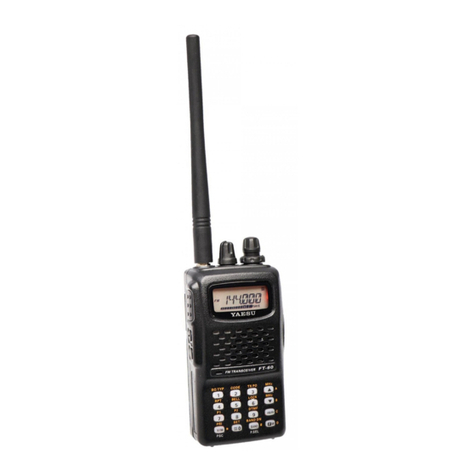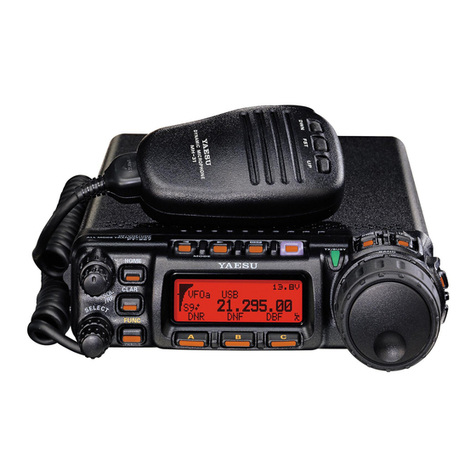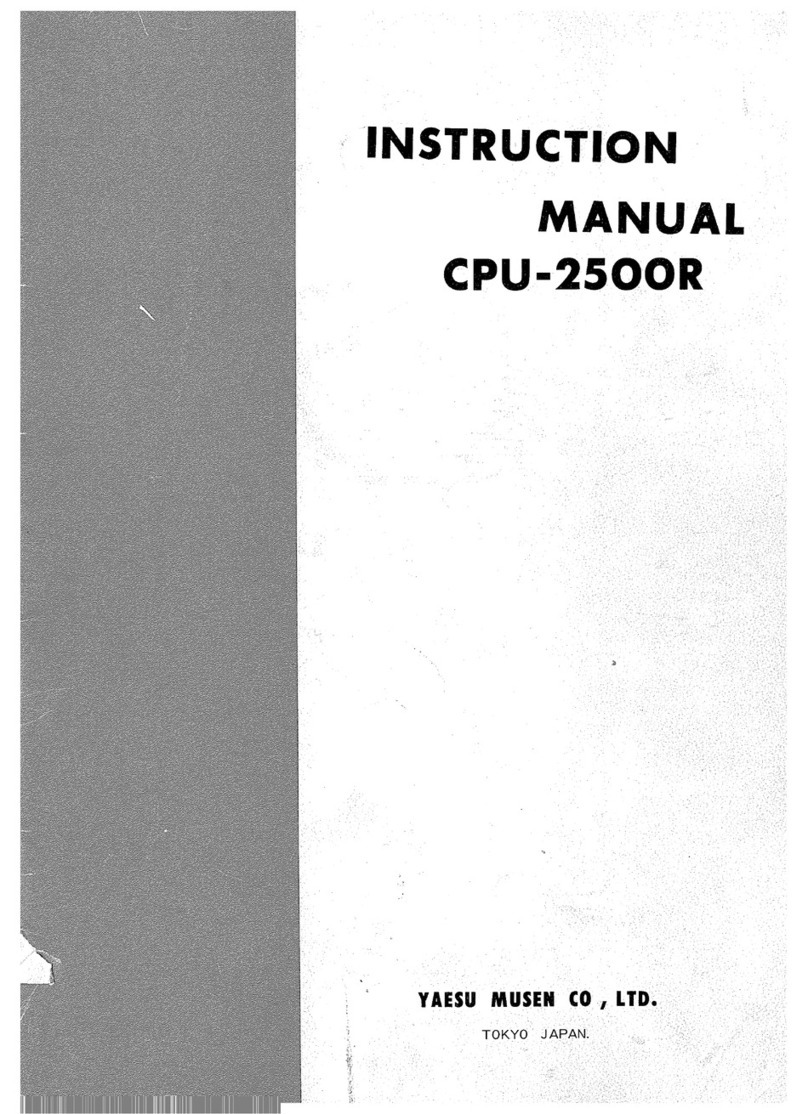
Page 93FT DX 3000 OperaTing Manual
Convenient MeMory funCtions
The FTDX3000 contains ninety-nine regular memories, labeled “01” through “99”, nine special programmed limit
memory pairs, labeled “P-1L/P-1U” through “P-9L/P-9U”, and ve QMB (Quick Memory Bank) memories, labeled “C-1”
through “C-5”. Each stores various settings, in addition to the VFO-A frequency and mode (See below). By default, the
99 regular memories are contained in one group; however, they can be arranged in up to six separate groups, if desired.
QuiCk Point:
The FTDX3000 memory channels store the following
data (not just the operating frequency):
VFO-A Frequency
VFO-A Mode
Clarier status and its Offset Frequency
ANT status
IPO status
Roong lter status and its Bandwidth
Attenuator status
Noise Blanker status
IF SHIFT and WIDTH status
CONTOUR status and its Peak Frequency
DSP Noise Reduction (DNR) status and its
Reduction algorithm selection.
DSP Notch lter (NOTCH) status
NAR bandwidth status
DSP Auto Notch lter (DNF) status
Repeater Shift Direction and CTCSS Tone
Frequency
MeMOry OperaTiOn
QMB MeMory Channel
regular MeMory Channels PMs MeMory Channels
QMB (QuiCk MeMory Bank)
The Quick Memory Bank consists of ve memories (labeled “Q-1” through “Q-5.”) independent from the regular and
PMS memories. These can quickly store operating parameters for later recall.
[STO] Button
[RCL] Button
QMB Channel Storage
1. Tune to the desired frequency on the VFO-A.
2. Press the blue [STO] button. The “beep” will con-
rm that the VFO-A contents have been written to
the currently available QMB memory.
If you repeatedly press the [STO] button, the QMB
memories will be written in the following order:
Q-2 Q-3 Q-4 Q-5 Q-1.
Once all ve QMB memories have data on them, previ-
ous data (starting with channel Q-1) will be over-written
on a rst-in, rst-out basis.
QMB Channel Recall
1. Press the blue [RCL] button. The current QMB
channel data will be shown on the frequency display
eld and the QMB memory channel number will be
shown in the Multi-Display Window.
2. Repeatedly pressing the [RCL] button will toggle
you through the QMB channels:
Q-2 Q-3 Q-4 Q-5 Q-1.
3. Press the [V/M] button to return to the VFO or Mem-
ory mode.
adviCe:
Rotating the Main Tuning Dial knob, or changing the
operating mode, will place the transceiver in the “Mem-
ory Tune” mode, which is a temporary “pseudo-VFO”
method of tuning off of a stored memory channel. If you
do not over-write the contents of the current memory
channel, the original contents will not be disturbed by
the initiation of Memory Tune operation.
5_PAGE_093-107.indd 93 2012/12/11 22:48:52

